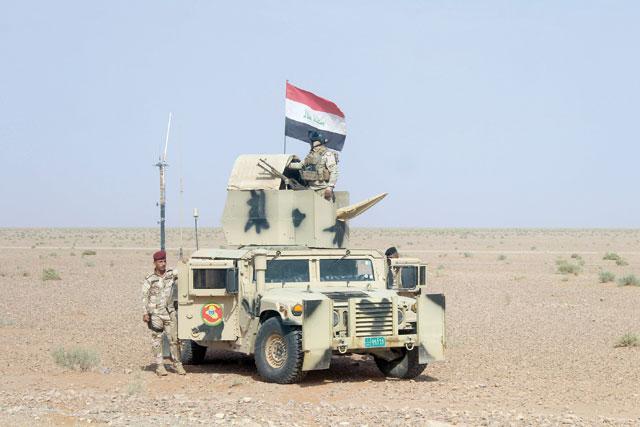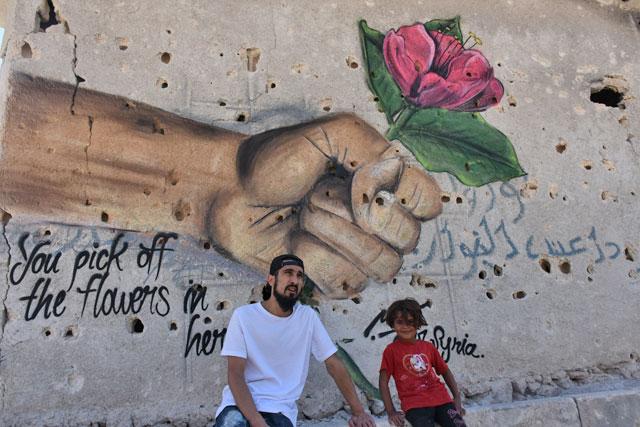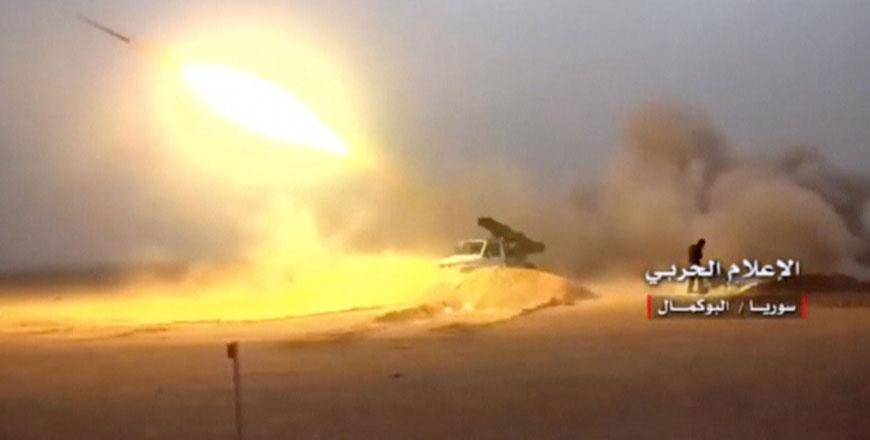You are here
Daesh guerrilla attacks point to its future strategy
By Reuters - Oct 28,2017 - Last updated at Oct 28,2017

Iraqi pro-government forces advance towards the town of Rawa, on the Euphrates River, during their offencive against Daesh on Saturday (AFP photo)
BEIRUT — Syrian and Iraqi forces closing in on the last scraps of the Daesh terror group’s self-styled “caliphate” straddling the remote border area between the two countries have already witnessed the extremists’ likely response.
While their comrades mounted last stands in their Syrian capital of Raqqa and the city of Hawija in Iraq, Daesh militants seized the Syrian town of Al Qaryatayn and launched its biggest attack for months in Ramadi late last month. That is the kind of guerrilla insurgency both countries foresee Daesh turning to.
“It is expected that after the Daesh terrorist organisation’s capacity to fight in the field is finished, its remnants will resort to this type of [guerrilla] operation. But for a certain period of time, not forever,” said a Syrian military source.
The continued ability for Daesh to mount attacks in areas where it was thought to have been eliminated will hinder efforts to stabilise regions when the fighting wanes.
In Iraq, where Daesh originated, it has a proven record of falling back upon local networks from which it can rise anew when conditions allow. So far, it has not shown it has the same capacity in Syria, and it might find doing so more challenging there than in Iraq.
The sectarian divisions on which it thrives are less pronounced in Syria, and it faces competition there for extremist loyalty from other powerful militant groups.
“Daesh is in essence an Iraqi organisation, it will survive to some extent in Iraq. Syrian members will dissolve in other Syrian extremist groups,” said Hisham Hashami, an adviser on Daesh to the Iraqi government.
But in both countries it has shown it can exploit holes left by overstretched enemies to carry out spectacular attacks — the one in Syria’s Al Qaryatayn most clearly — that spread panic and tie down opposing forces.
It has also proved able to carry out bombings and assassinations in areas controlled by the Iraqi and Syrian governments, US-backed Kurdish militias and rival extremist rebel groups, signalling an ability to survive underground.
A extremist from a Syrian rebel faction opposed to Daesh said the group had won enough support among young men to give it a latent capacity to revive.
“I believe that it is possible, given that its ideology has spread widely among the youths, that something new will emerge,” the extremist said, pointing to the highly effective propaganda machine deployed by Daesh over the last three years.
Terrible speed
The Al Qaryatayn attack began on the evening of 29 September, when up to 250 militants with guns, rockets and mortars spread around the area with “terrible speed”, said Ayman Al Fayadh, a resident.
It was particularly alarming because the government had declared Al Qaryatayn safe months ago, and had helped its residents to move back into their homes.
When the extremists were finally forced out after three weeks of fighting around the outskirts of Al Qaryatayn, they took their revenge, slaughtering scores of its inhabitants. “They were very bloodthirsty and didn’t spare anyone,” Fayadh said.
The Syrian military source said it took three weeks to retake the town because it was inhabited and the army was trying to avoid civilian casualties.
However, the attack showed how towns in Syria’s deserts, where armed forces can be spread only thinly, are vulnerable to Daesh and that such operations can tie down opposing armies.
“People are afraid of Daesh returning,” said a Syrian journalist who visited the town this week. “They killed anyone who had taken part in pro-government protests. Bodies had been thrown in streets and in wells.”
Fayadh also said townspeople were among the attackers, indicating that Daesh used its years of rule to build local support networks and establish sleeper cells for future attacks - something that could be replicated elsewhere in Syria.
“They’re going to continue to have to look for places where they can plan and finance and resource and launch their attacks from,” said Colonel Ryan Dillon, spokesman for the US-led coalition, noting Daesh had often used “sparsely populated areas”.
Related Articles
BEIRUT — The Syrian Observatory for Human Rights reported on Sunday that the Daesh terror group fighters had captured a town in Homs provinc
DEIR EZZOR, Syria — The Syrian army and loyalist militiamen Sunday retook full control of Albu Kamal from the Daesh terror group, a military
BEIRUT — The Syrian army said it had retaken a swathe of territory from the Daesh terror group in southern Syria on Thursday in a rapid adva


















